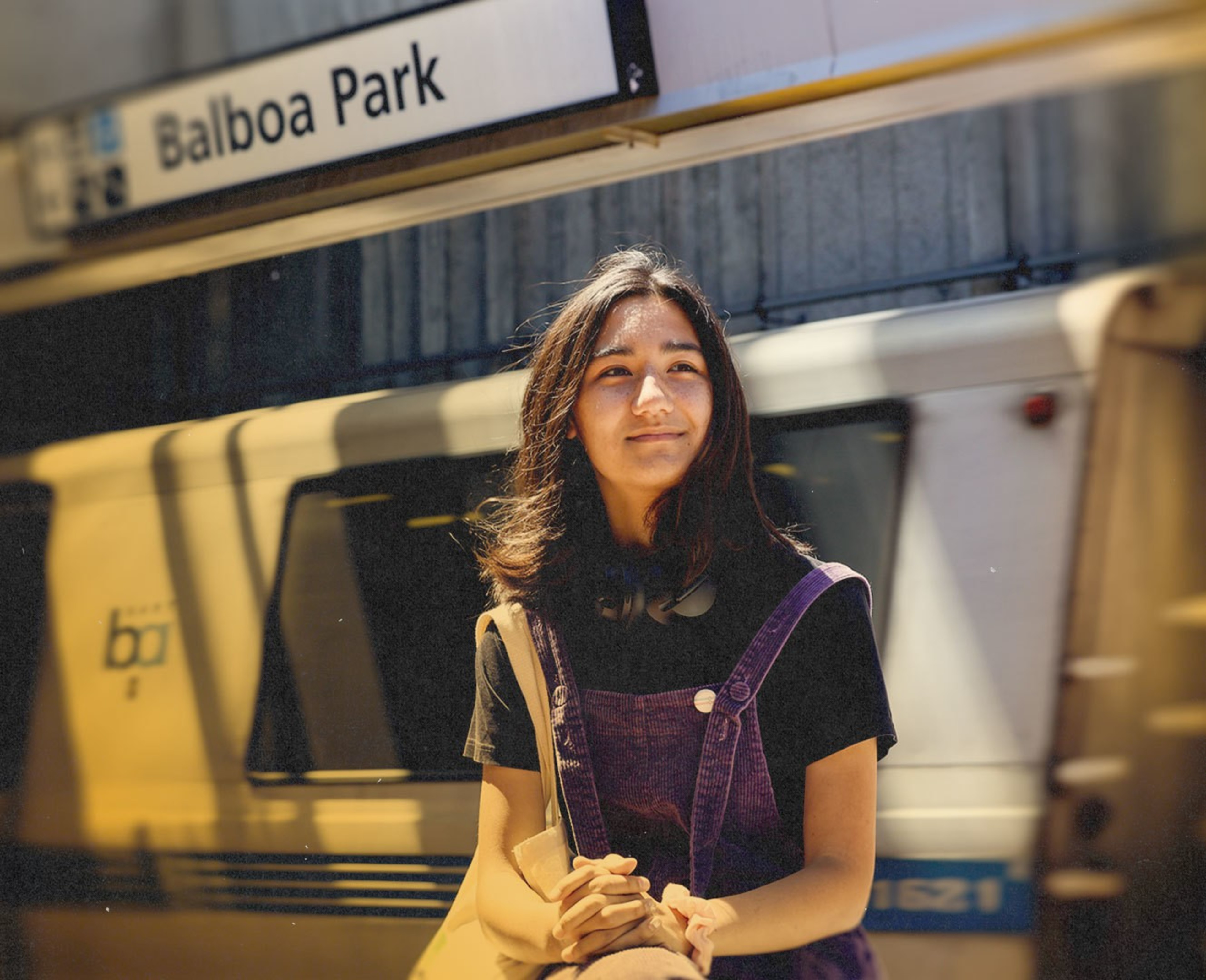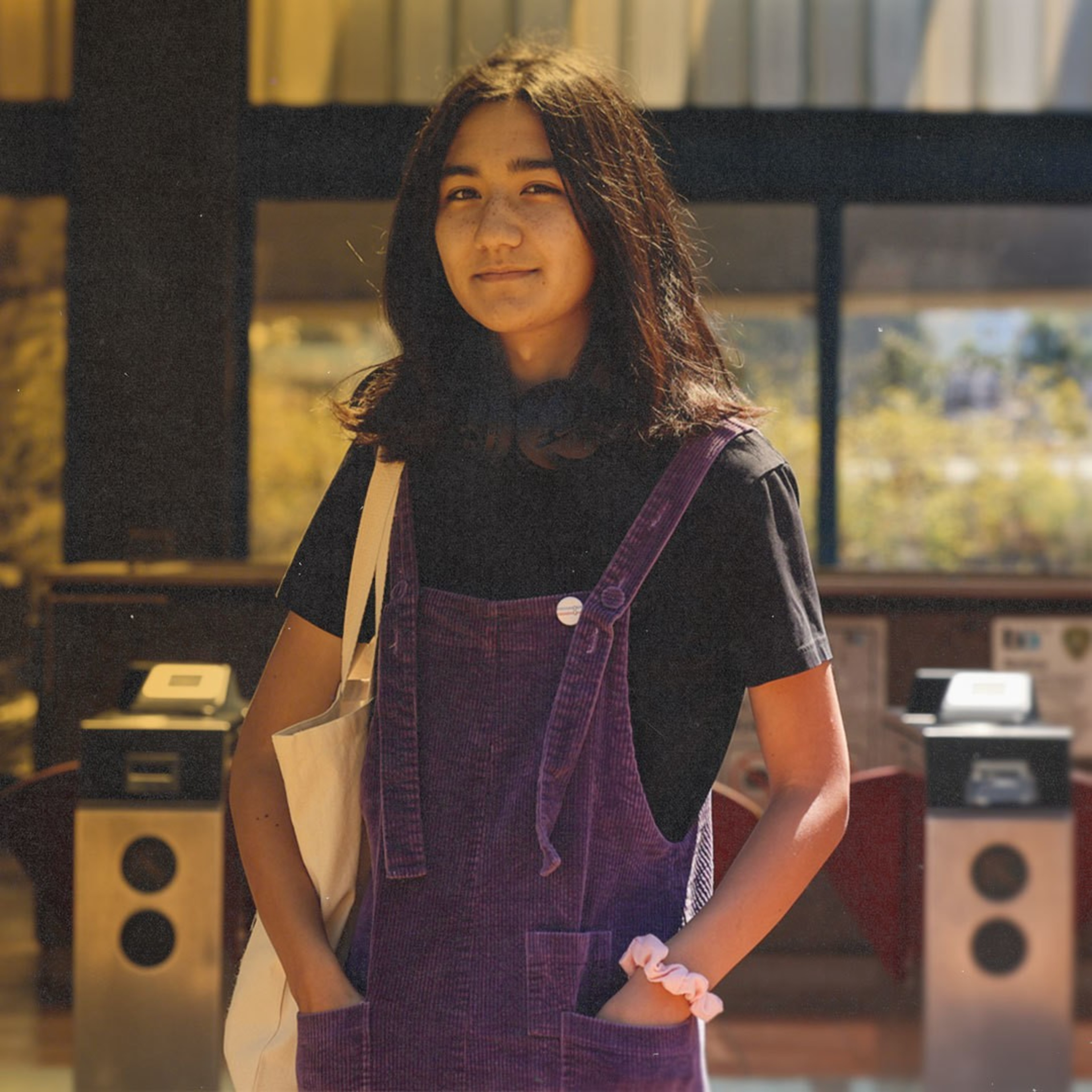Skip to main content








Know Your Neighbors
Fern K. Hahn
Wants to Put More Lines on the MapWritten by Sarah Holtz
Published Aug. 28, 2022 • 10:01am
You could call it escapism, but 18-year-old Fern K. Hahn thinks of it as a theory of change—public transit that will make the Bay Area more livable for everyone. The Oakland native spent the last two years of high school mapping out hypothetical transit lines in their free time and organizing with local transit advocates.
Fern’s brand of transit optimism combines urban planning with economic justice and sustainability. “Creating spaces that people can exist in, while not in their two tons of metal,” Fern said, explaining their vision for a transit-first city.
Fern, who is trans and nonbinary, is part of a generation who grew up with all the world’s information at their fingertips. Many are coming to the conclusion that society’s structural inequalities are largely features—not bugs—and that they’re perpetuated by a lack of imagination and a resignation to accept the status quo. Their work is part of a broader movement to democratize our cities by providing transportation for people who rely on it most.
The obsession began at a young age. “When I was around four, I started looking around Google Maps for hours and it never really stopped,” they remembered. Fern’s mother worked as an urban planner in the Bay Area, Austin and Portland, and as their family moved from place to place, buses and trains became an anchor for Fern.
The first two years of the pandemic coincided precisely with Fern’s junior and senior years of high school, when the transit authorities scaled back train schedules and suspended entire bus routes. That’s when the Fern doubled down on their commitment to public transportation—deciding not to get a driver’s license, even though they live in a low-transit area of Berkeley.
During this time, Fern and their friends formed a community of young urbanists that call themselves Transit Twitter Besties. They hang out online and IRL; in April, BART invited the group to tour their downtown Oakland headquarters. And this past month, TTB challenged themselves to travel to the Sacramento River Delta exclusively via public transit.
Fern spoke to The Standard the week they were packing up to leave for their first year at Toronto Metropolitan University, where they plan to study urban and regional planning. They’ve learned about the historical context that underlies limited transit infrastructure—the postwar pattern of suburbanization that informed the original BART map—but they hope to learn how to enact change on a policy level.
Along with their friend Cedar, Fern compiles ride-along videos on a YouTube channel called Transitplant. Though the videos are playful, they also reflect the evolving nature of Bay Area public transit. In one, Fern and Cedar ride the Oakland Airport Connector, a line that began operation when the two friends were in elementary school. In another, they look forward to the day when high-speed rail will roll into Downtown San Francisco.
Photo by Camille Cohen/The Standard

Special powers
Inspiring people with optimism.
Arch enemies
Blind resistance to change.
Weaknesses
Relative political illiteracy.
Lineage
I come from a heritage of urbanists, and more broadly, forward thinkers.
Current mission
I want to play a role in helping more people get more places in an affordable and timely manner.
'I just hope that putting the ideas out there in the first place can make people aware that better things are possible.'
